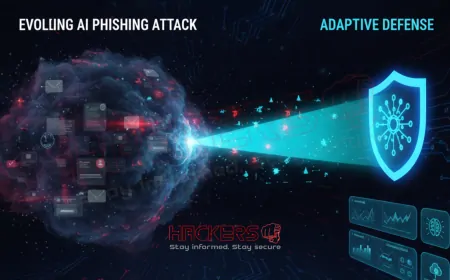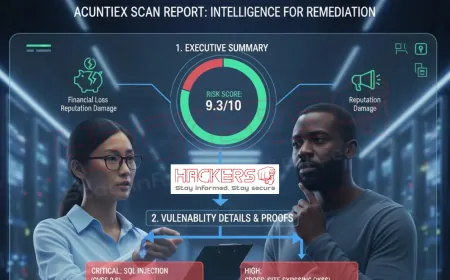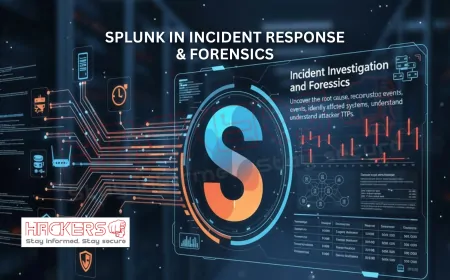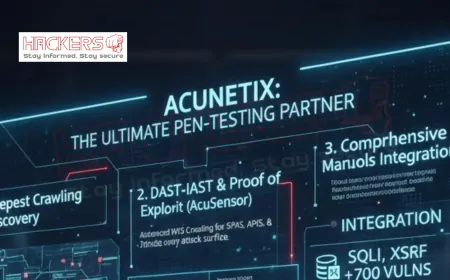What Are the Limitations of Nikto in Modern Web Security?
Nikto has been a trusted name in web security for over 20 years. It’s fast, free, and finds real problems. But in 2025, with single-page apps, microservices, and AI-powered attacks, even the best tools have limits. And Nikto, for all its strengths, is no exception. Think of Nikto like a smoke detector. It’s great at spotting smoke (misconfigured servers, old software, exposed files). But it won’t tell you if someone’s picking the lock or hacking your smart fridge. It’s a part of security, not the whole system. In this honest, no-fluff guide, we’ll explore the real limitations of Nikto in today’s web security landscape. We’ll show what it misses, why it matters, and how to fill the gaps. Whether you’re a developer, security analyst, or website owner, this post will help you use Nikto wisely, and avoid the trap of thinking it’s enough on its own.

Table of Contents
- Quick Recap: What Nikto Does Well
- 1. No Application Logic Testing
- 2. No JavaScript or API Crawling
- 3. No Authenticated Scanning
- 4. False Positives and Negatives
- 5. No Zero-Day Detection
- 6. Easily Blocked by WAFs
- 7. No Exploit Execution
- 8. Limited Cloud and Container Awareness
- 9. No Business Logic or Access Control Testing
- 10. No Reporting or Remediation Guidance
- Top 10 Limitations: Summary Table
- How to Overcome Nikto’s Limitations
- Conclusion: Use Nikto, But Don’t Stop There
Quick Recap: What Nikto Does Well
Before we dive into limitations, let’s be fair. Nikto is excellent at:
- Finding outdated server software
- Detecting exposed files (
phpinfo.php,.env) - Spotting directory indexing
- Checking HTTP headers and methods
- Identifying default pages and CGI scripts
It’s fast, lightweight, and perfect for server hygiene. But modern web apps are more than just servers.
1. No Application Logic Testing
What it means: Nikto doesn’t understand your app’s workflow. It can’t test if a user can edit someone else’s profile or buy items for $0.
Real risk: Business logic flaws caused 68% of breaches in 2024 (Verizon DBIR). Nikto sees none of them.
Example: A shopping cart lets you change price=100 to price=1 in the request. Nikto won’t notice.
2. No JavaScript or API Crawling
What it means: Modern sites use React, Vue, or Angular. Content loads via JavaScript. APIs return JSON. Nikto sees only the initial HTML.
Fact: Over 98% of websites use JavaScript (W3Techs, 2025). Nikto skips most of it.
Example: A dashboard at /app loads via fetch('/api/user'). Nikto never follows the API call.
3. No Authenticated Scanning
What it means: Nikto can’t log in as a user. It only scans public pages.
Supports basic auth only (-id user:pass). No forms, OAuth, or 2FA.
Real risk: Most vulnerabilities are behind login (e.g., admin panels, user settings).
4. False Positives and Negatives
False positives: Flags safe files as risky.
/icons/READMEis normal on Apache- Custom error pages trigger “interesting file” alerts
False negatives: Misses real issues.
- Custom app with vulnerable logic
- Zero-day in a new framework
You must verify every finding manually.
5. No Zero-Day Detection
What it means: Nikto uses a database of known vulnerabilities. If a flaw was discovered yesterday, Nikto doesn’t know it yet.
Critical: 60% of breaches exploit vulnerabilities less than 30 days old (Mandiant, 2025).
6. Easily Blocked by WAFs
What it means: Web Application Firewalls (Cloudflare, AWS WAF) detect Nikto’s fingerprint and block it.
Even with -evasion, modern WAFs rate-limit or challenge it.
Example: Cloudflare shows CAPTCHA after 10 Nikto requests.
7. No Exploit Execution
What it means: Nikto finds issues. It doesn’t prove they’re exploitable.
It won’t:
- Upload a webshell via PUT
- Trigger SQL injection
- Escalate from directory listing to RCE
You need tools like Metasploit or sqlmap for proof.
8. Limited Cloud and Container Awareness
What it means: Nikto scans one URL at a time. It doesn’t understand:
- Load balancers
- Serverless functions
- Kubernetes pods
- S3 buckets or GCS
It misses cloud misconfigs like public S3 buckets or open metadata endpoints.
9. No Business Logic or Access Control Testing
What it means: Nikto can’t tell if:
- User A can view User B’s data
- Admin panel is accessible via IDOR
- Rate limiting is missing
These require manual testing or tools like Burp Suite.
10. No Reporting or Remediation Guidance
What it means: Nikto outputs raw text, HTML, or XML. No:
- Risk scoring
- CVSS ratings
- Fix instructions
- Trend analysis
You do all the work to prioritize and fix.
Top 10 Limitations: Summary Table
| # | Limitation | Impact | Workaround |
|---|---|---|---|
| 1 | No App Logic Testing | High | Use Burp, ZAP |
| 2 | No JS/API Crawling | High | OWASP ZAP, Nuclei |
| 3 | No Authenticated Scans | Medium | Basic auth only |
| 4 | False Positives/Negatives | Medium | Manual review |
| 5 | No Zero-Days | High | Threat intel, patching |
| 6 | Blocked by WAFs | Medium | Evasion, internal scans |
| 7 | No Exploit Proof | Low | Metasploit, manual |
| 8 | No Cloud Awareness | Medium | ScoutSuite, Prowler |
| 9 | No Access Control | High | Burp, manual |
| 10 | No Smart Reporting | Low | Parse output |
How to Overcome Nikto’s Limitations
Use Nikto as one layer in a defense-in-depth strategy:
- Server hygiene: Nikto (daily)
- App testing: OWASP ZAP, Burp Suite
- APIs: Postman, Nuclei
- Cloud: Cloud-native tools (ScoutSuite, Prowler)
- Zero-days: Patch fast, monitor threat intel
- Logic flaws: Manual pentesting
Best combo: Nikto + ZAP + Manual Review = 90% coverage
Conclusion: Use Nikto, But Don’t Stop There
Nikto is like a blood pressure monitor. It tells you if something’s wrong with the basics. But it won’t diagnose cancer, prescribe medicine, or predict a heart attack.
In 2025, web security is complex. Attackers use AI, supply chain attacks, and zero-days. Nikto catches the low-hanging fruit, and that’s valuable. But relying on it alone is like locking your front door and leaving the safe open.
Use Nikto. Love Nikto. Just don’t trust it to do everything.
Run it daily. Fix what it finds. Then layer on deeper tools and human expertise. That’s how you build real security in the modern web.
Is Nikto still useful in 2025?
Yes. It catches server misconfigs that cause 40% of breaches.
Can Nikto replace a full pentest?
No. It’s a scanner, not a tester. Use both.
Does Nikto work on SPAs?
Only the server layer. Not the JavaScript app.
Can Nikto scan behind login?
Only with HTTP basic auth. Not forms or OAuth.
Why does Nikto give false positives?
It flags patterns, not context. Always verify.
Can Nikto find SQL injection?
It flags vulnerable scripts, but doesn’t test injection.
Is Nikto blocked by Cloudflare?
Often. Use internal scans or evasion modes.
Does Nikto detect XSS?
No. It may flag old scripts, but not test XSS.
Can Nikto scan APIs?
No. It doesn’t follow JSON or REST calls.
Is Nikto good for compliance?
Yes for server checks (PCI DSS 6.1, 6.2), but not full scope.
Can Nikto find zero-days?
No. Only known vulnerabilities in its database.
Does Nikto work in CI/CD?
Yes. Great for blocking bad deploys.
Can Nikto scan Docker containers?
Yes, if the port is exposed. But not the image itself.
Should I trust Nikto output blindly?
No. Always review and test findings.
Can Nikto replace Burp Suite?
No. They do different jobs. Use both.
Does Nikto support HTTP/3?
Limited. It works best with HTTP/1.1 and HTTP/2.
Can Nikto scan localhost?
Yes: nikto -h http://127.0.0.1
Is Nikto part of OWASP?
Yes. It’s an official OWASP project.
Can I extend Nikto?
Yes. Add custom checks to the database.
Where can I learn more about Nikto?
GitHub: https://github.com/sullo/nikto
What's Your Reaction?










































































